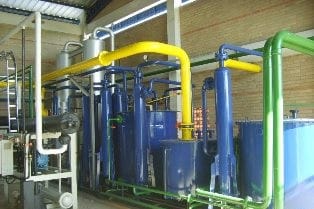- A-29, Industrial Area, Site IV,
Sahibabad, Ghaziabad, UP, India. - (+91-120) 2896063
info@bhartiyagroups.com


The horrific pictures unfolding in India could presage a frightening new phase of the pandemic, wherein the people die in droves caused by a lack of competent medical care rather than just the disease itself. An unexpected lack of medical liquid oxygen plants in the country could add to the problem.
Among the easiest and done to help to treat the condition which causes hypoxia would be to use oxygen. A constant dose of compressed oxygen can help patients who also are gasping for air.
In retrospect, it may look simple, but it took approximately 2 centuries for bizarre beliefs, open quackery, and total war in the medical profession as well as outside to be defeated.
The discovery of oxygen in medicine goes all the way back to the 1770s, when Swedish pharmacist Carl Scheele and British researcher Joseph Priestly independently extracted the gas. Priestly was unjustly given the most of the credit.
Worse, Priestly thought in phlogiston, an ethereal element that would be reportedly released after combustion. He dubbed what we call "oxygen" "an article entitled air." His chest felt "unusually simple and easy for some time following" after he breathed it. In a scientific paper, Priestley bragged that "just two mice and myself now have the honor of breathing" the amazing gas.
Priestley suggested that a new chemical would be "particularly beneficial to the lungs in some diseased situations, when the usual air would not have been sufficient to carry out the rotten effluvium" but it seemed to make candles burn brighter. Nonetheless, he stuck to his phlogiston theory, warning that breathing pure oxygen may be dangerous – that it can be like burning the candle by both ends.
Priestley and other engineers and scientists, notably James Watt, formed the Pneumatic Institution in Birmingham to study the effects of new chemicals on patients. They offered to treat various ailments, including "obstinate venereal symptoms," with dephlogisticated air, though they make no promises of a solution.
They weren't terribly effective, and there was a positive aspect. This unusual group, according to one medical historian, created much of the oxygen-delivery devices still being used today, including mouthpieces, corrugated, non-crushable breathing tubes, and means for mass-producing the gas.
The Pneumatic Institution closed down, although oxygen continued for use as a folk treatment. The majority of these procedures didn't truly use pure oxygen, instead administering mixes of gases not comparable to normal air, usually a few gulps' worth but little more.
But that didn't seem to stop the marketers of these wonder cures from making outrageous marketing claims. Patients were given one bottle of "Oxygen" and one bottle of "Oxygen Tonic" by the producers of the so-called "Oxygen Treatment," a common treatment from 1884. This was intended to last two months and treat all from dyspepsia to arthritis.
By the late 1800s, oxygen therapy had already become synonymous with quackery. However, in 1890, a physician named Dr. Alfred Blodgett used to have a pneumonia patient who he judged "irreversibly doomed." He connected her up to that of an oxygen canister, turned on the gas — and left it running in the hopes of just easing her dying moments.
It's conceivable that it's the first time oxygen was administered to a patient on a constant basis in history. The woman recovered, and her breathing became regular, much to Blodgett's surprise. He made his findings public, claiming that oxygen might just save lives. "Many examples will indeed be found where the period of greatest threat can be comfortably tidied over," he stated.
However, this was just the beginning of oxygen's rebirth. Other researchers have attempted to deliver oxygen after studying Blodgett's study, and not through the lungs. They injected this into the stomach via the skin, up the urethra, and into the urethra. The most strange of them would be the notion of an oxygen enema, which was pushed by corn-flake enthusiast Dr. J. H. Kellogg, who was known for promoting doubtful medical treatments.
It required a Scottish doctor named John Scott Haldane to cut through to the silliness and conduct the experiment necessary to prove that breathing oxygen was the best alternative – and thus had to be continuous and at high enough levels to be effective. "The Therapeutic Administration of Oxygen," was published in 1917.
His performance was great. Both sides employed poison gas throughout World War I. Haldane created equipment that provided oxygen to soldiers who'd been exposed to a chemical weapons attack. It increased oxygen plants' emphasis more. The British customized android equipment which could be used to treat survivors, providing them with continuous doses of oxygen for extended periods of time, after much trial and error.
liquid oxygen plants, oxygen plants, liquid oxygen plant manufacturers in india, liquid oxygen gas plant, liquid oxygen nitrogen plant, oxygen plants in india, psa oxygen plant, medical oxygen plant, oxygen generating plants, oxygen plant manufacturer







